 |
 |
 |
| |
Subcortical brain volumes of children who are HIV-exposed and uninfected in the first three years of life: a South African birth cohort study
|
| |
| |
AIDS 2022 July 29-Aug 1 Montreal oral slide presentation below
Program abstract
BACKGROUND: Children who are HIV-exposed and uninfected (CHEU) are at risk for early neurodevelopmental impairment. Neuroimaging studies are scarce, although recently we reported smaller volumes of basal ganglia structures in CHEU compared to children who are HIV-unexposed (CHU) at 2-6 weeks of age. However, no studies have examined subcortical brain volumes through childhood. We aimed to investigate whether the effects of in utero exposure to HIV/ART on subcortical brain structures detected in infancy are evident at age 3 years.
METHODS: The Drakenstein Child Health Study is a population-based birth cohort in South Africa. Pregnant women were enrolled in the second trimester of pregnancy and mother-child pairs received HIV testing per local guidelines; all mothers with HIV were initiated on ART. A subgroup of children had magnetic resonance imaging (MRI) aged 2-3 years. Structural T1-weighted images were acquired on a 3T Siemens MRI scanner during natural sleep and images were processed using FreeSurfer software, blinded to HIV status. Bilateral subcortical volumes were extracted from segmented images, and CHEU and CHU groups were compared using multivariable linear regression.
RESULTS: One hundred and sixty-two children (70 CHEU; 92 CHU) (mean age 34 months; 58% male) had high resolution scans. Socioeconomic characteristics were similar between groups. CHEU had lower overall putamen volume compared to CHU (4381 mm3 versus 4597 mm3, p=0.016, Cohen''s d -0.37 [-0.69 to -0.06]), with similar reductions when analysed by hemisphere (left p=0.023; right p=0.018). The findings held after adjusting for multiple covariates including age, sex, socioeconomic status and intracranial volume. Compared to CHU, CHEU also had lower hippocampus volume (3043 mm3 versus 3149 mm3, p=0.046, Cohen''s d -0.31 [-0.62 to 0.00]). The left hemisphere difference persisted after adjusting for covariates (p=0.038).
CONCLUSIONS: Altered morphometry in the basal ganglia region can be detected in CHEU across the first 3 years of life. Further, CHEU showed smaller volumes of the hippocampus at 3 years, a region known to be vulnerable to early-life exposures. These findings suggest that in utero HIV/ART exposure may affect early subcortical brain development with enduring impact. Follow up studies are needed to determine the underlying mechanisms and long-term trajectories.
-------------------------------------
Smaller Volumes of 2 Brain Regions in Children Exposed to HIV in Utero
AIDS 2022, July 29-August 2, Montreal
Mark Mascolini
At age 2 to 3 years, children exposed to HIV and antiretroviral therapy (ART) in their mother’s womb—but not infected with HIV—had slightly smaller volumes of two brain regions, according to results of a 162-child MRI study in South Africa [1]. Researchers worry their findings mean “in utero HIV/ART exposure may affect early subcortical brain development with enduring impact.”
Researchers from the University of Cape Town and colleagues from other centers noted that the global population of HIV-exposed but uninfected (HEU) has grown steadily over the past 20 years, even as global HIV incidence in children stayed flat. More than 20% of children born in some countries with high HIV prevalence, including South Africa, are HEU. Worldwide, scientists estimate that 16 million children are HEU.
HEU children run a high risk of early neurodevelopmental impairment, including expressive language development and gross motor development [2]. Compared with HIV-unexposed uninfected children (HUU), HEU children had smaller total grey matter volume, subcortical volume, and caudate volume in a prior MRI study by some of the Cape Town team [3]. They wondered whether those changes persist over the early years of life.
To find out, the investigators analyzed children in South Africa’s Drakenstein Child Health Study, a population-based birth cohort study with more than 1000 mother-child pairs. Participants live in a semirural region, and 21% of them have HIV infection. To be included in the new imaging study, children had to be born after 36 weeks’ gestation, could have no medical comorbidities, and could not have an intensive care history. All their mothers got tested for HIV and received ART if positive.
To compare cognitive development in HEU and HUU children, researchers used the third edition of the Bayley Scales of Infant and Toddler Development, which has been validated in a South African population and covers cognitive development, language development, and motor development. MRI scans were read by trained assessors blinded to each child’s HIV status.
The analysis included 70 HEU children and 92 HUU children. They did not differ significantly in age at MRI (33.8 and 34.3 months), proportion of boys (65.7% and 52.2%, P = 0.08), birth weight, monthly household income, maternal education, or maternal alcohol use during pregnancy. But mothers of HEU children were significantly older at their child’s birth than mothers of HUU children (29.6 vs 26.8, P = 0.002).
Average subcortical volume was slightly but significantly lower in HEU than HUU children (46,929 vs 48,311 mm3). After adjustment for child age at scan, sex, intracranial volume, maternal age, maternal education, and household income, the mean difference in subcortical volume was 946 mm3 lower in the HEU group (P = 0.028).
Two subcortical regions accounted for this overall difference: the putamen (average 4381 mm3 for HEU and 4597 mm3 for HUU, adjusted mean difference -181, P = 0.024) and the hippocampus (average 3043 mm3 for HEU and 3149 mm3 for HUU, adjusted mean difference -86, P = 0.048). For the total putamen these numbers meant a 5% difference between HEU and HUU, and for the total hippocampus a 3% difference.
Cognitive development and motor development did not differ significantly between HEU and HUU children, but language development was worse in the HEU group than the HUU group (81.82 vs 86.25, P = 0.011). Pearson’s correlations confirmed the impact of the smaller putamen (0.20, P = 0.017) and the smaller hippocampus (0.21, P = 0.012) on language development.
The Cape Town team concluded that at age 2 to 3 years, HEU children have subtly smaller subcortical volumes than HUU children, particularly in the basal ganglia, which includes the putamen and hippocampus and correlates with language development.
References
1. Wedderburn CJ, Yeung S, Groenewold NA, et al. Subcortical brain volumes of children who are HIV-exposed and uninfected in the first three years of life: a South African birth cohort study. AIDS 2022, July 29-August 2, Montreal.
2. Wedderburn CJ, Weldon E, Bertran-Cobo C, et al. Early neurodevelopment of HIV-exposed uninfected children in the era of antiretroviral therapy: a systematic review and meta-analysis. Lancet Child Adolesc Health. 2022;6:393-408. doi: 10.1016/S2352-4642(22)00071-2.
3. Wedderburn CJ, Groenewold NA, Roos A, et al. Early structural brain development in infants exposed to HIV and antiretroviral therapy in utero in a South African birth cohort. J Int AIDS Soc. 2022;25(1):e25863. doi: 10.1002/jia2.25863.
-------------------------------
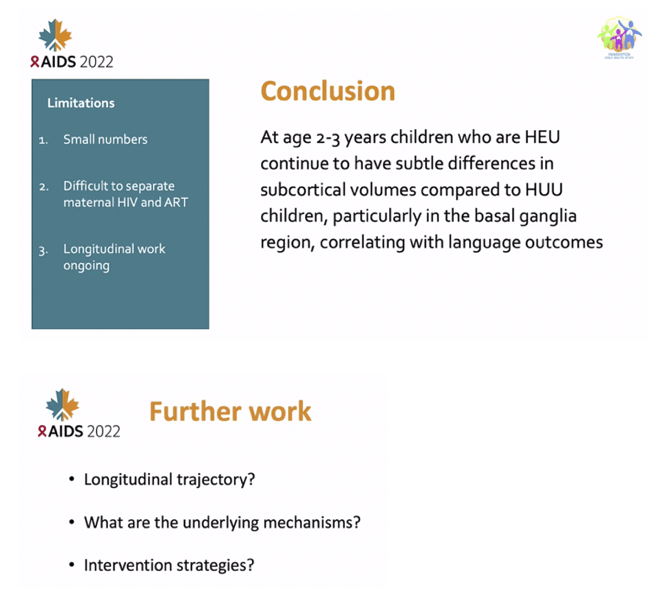
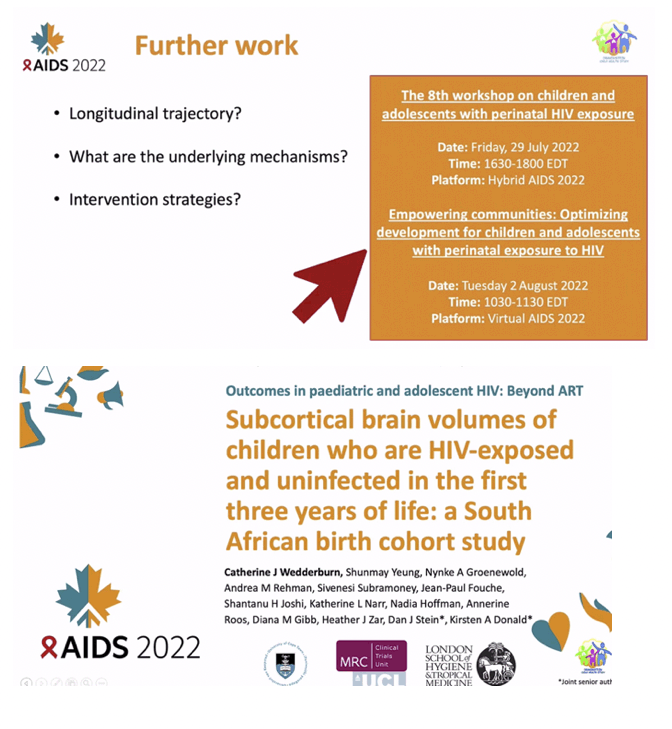
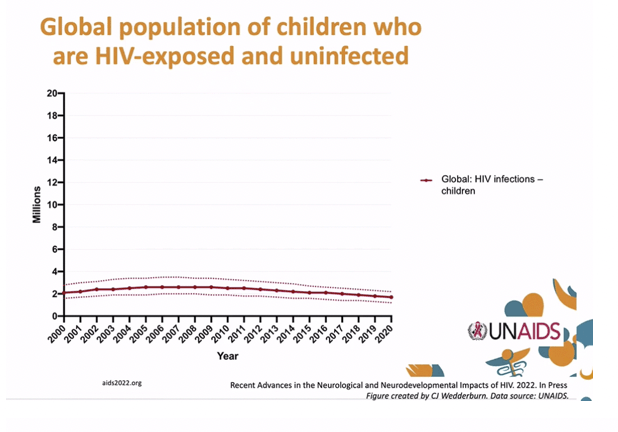
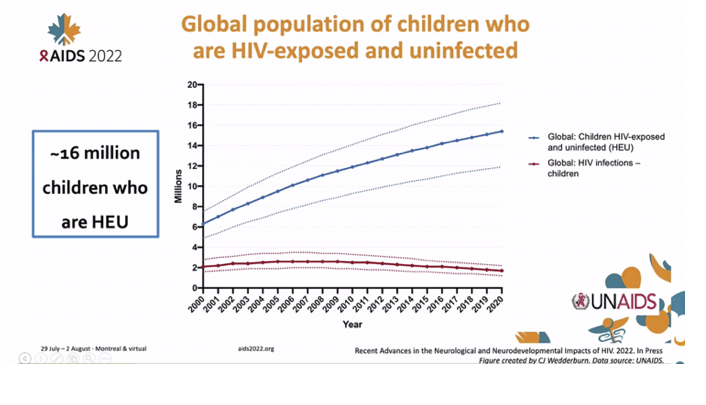
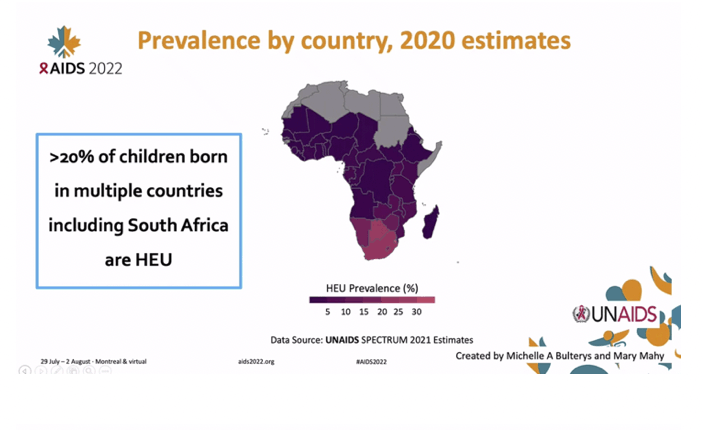
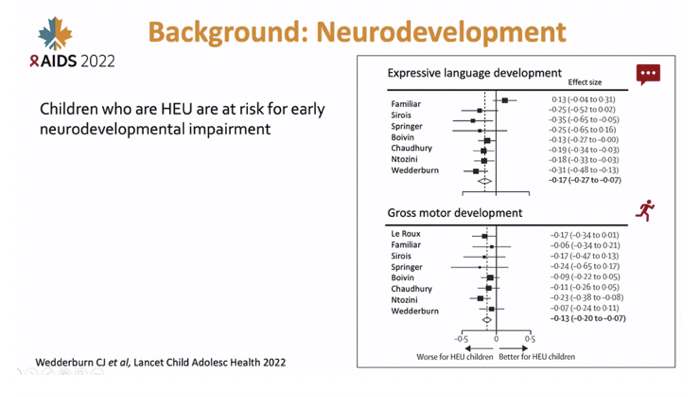
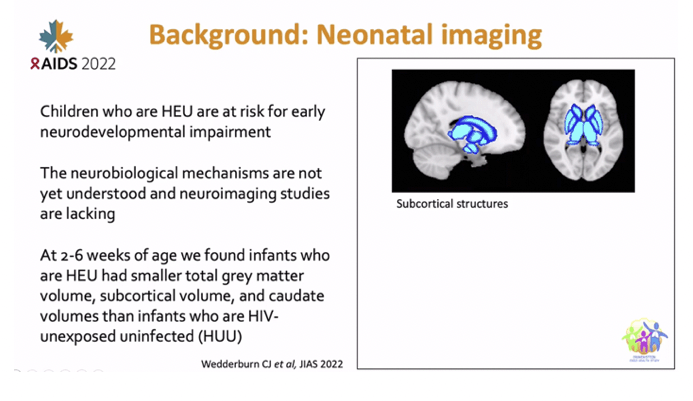
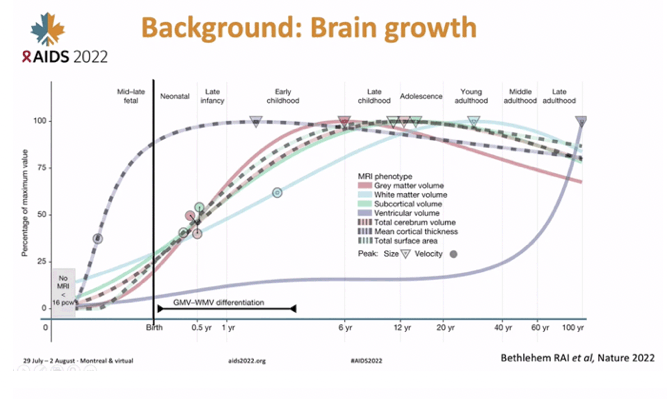
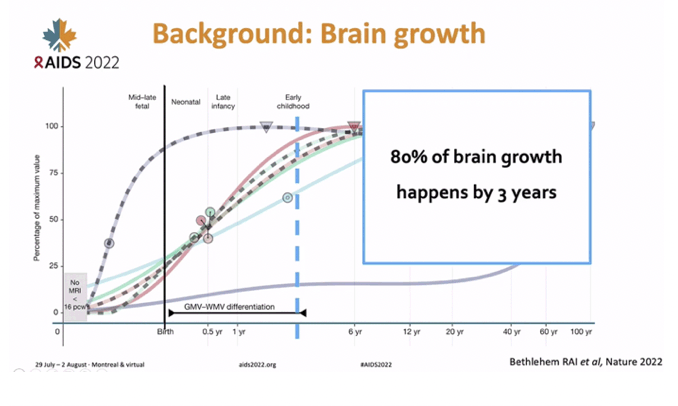
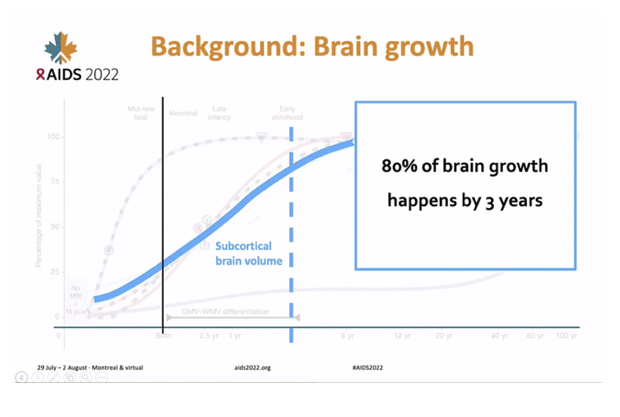
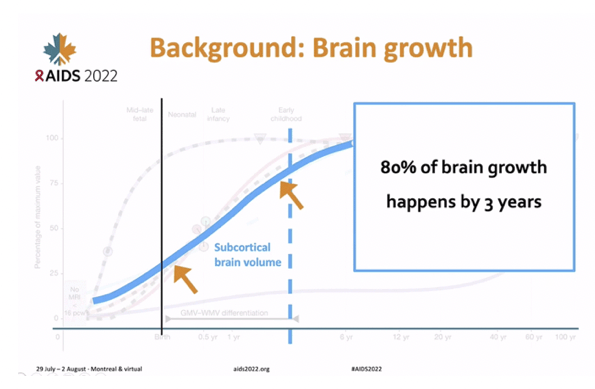


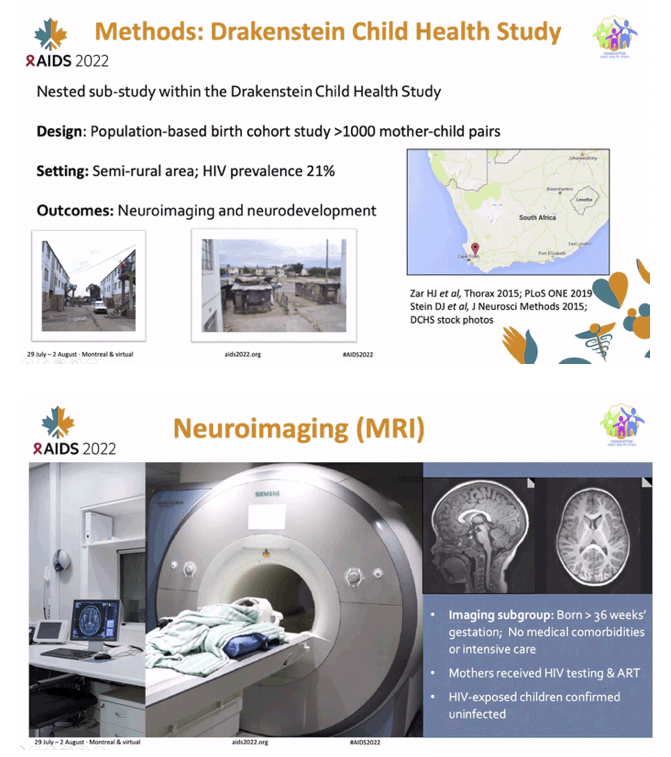
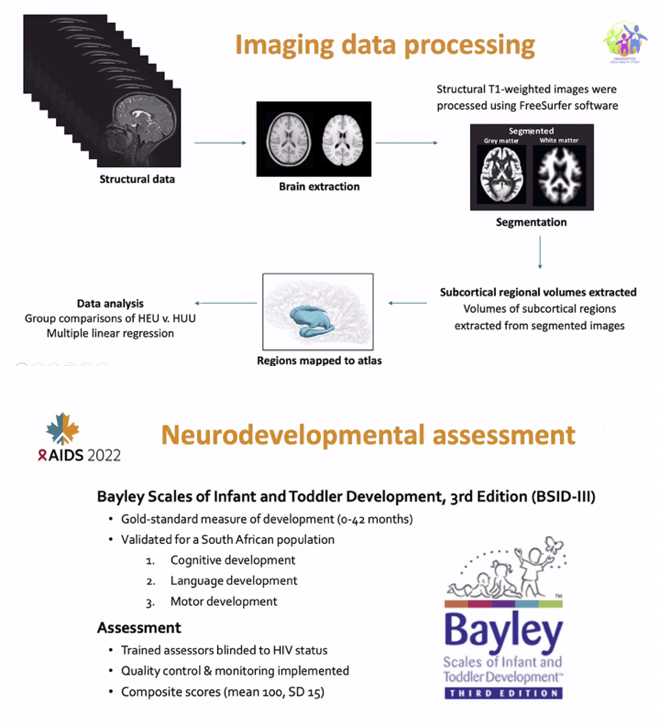
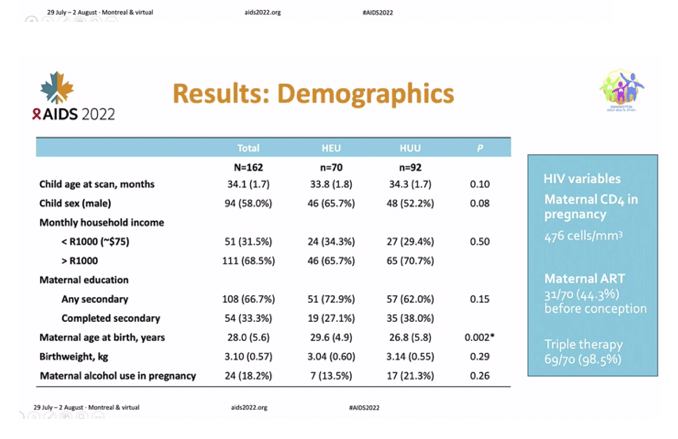
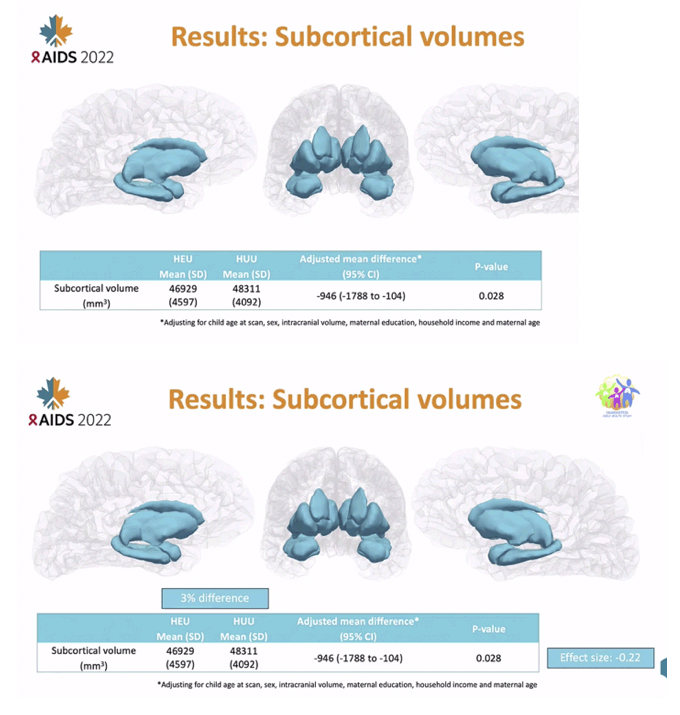
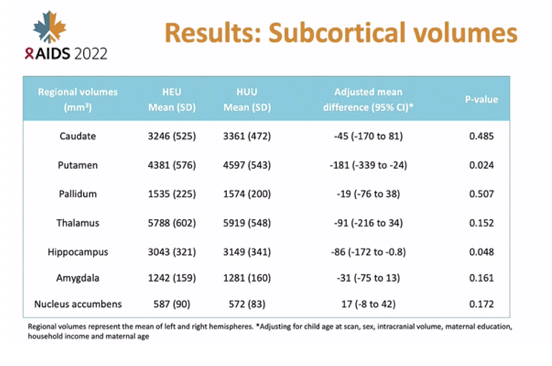
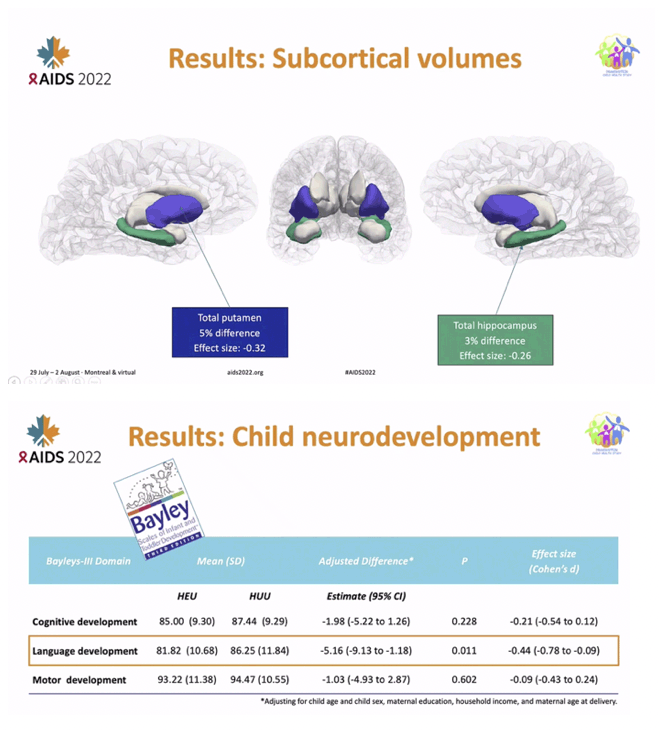
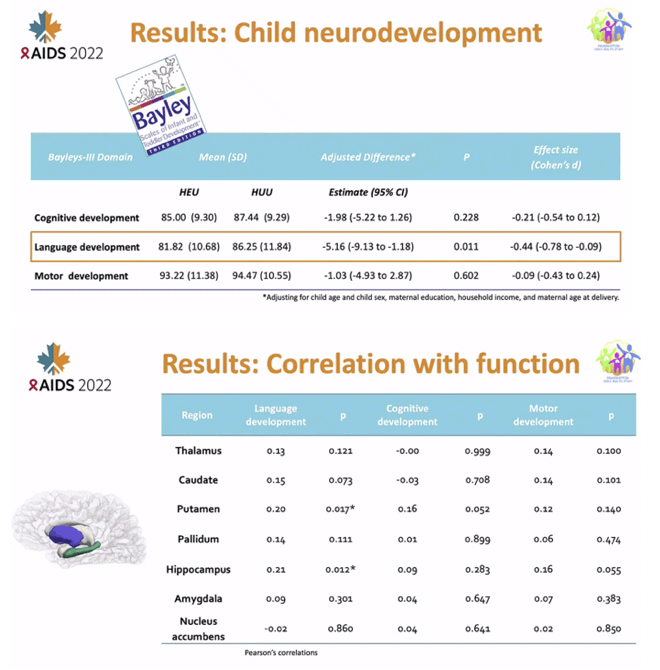
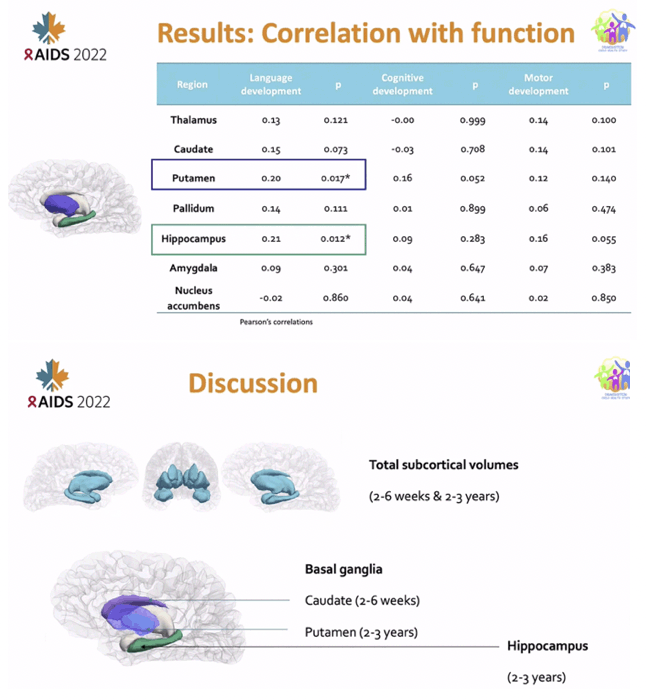
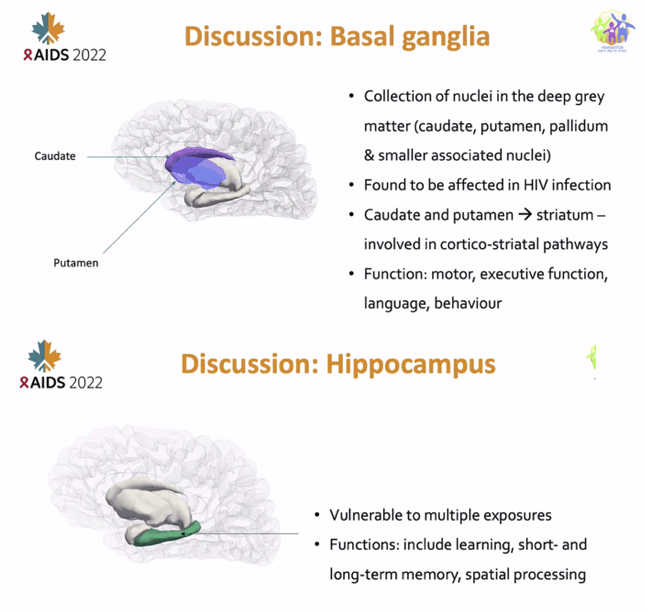
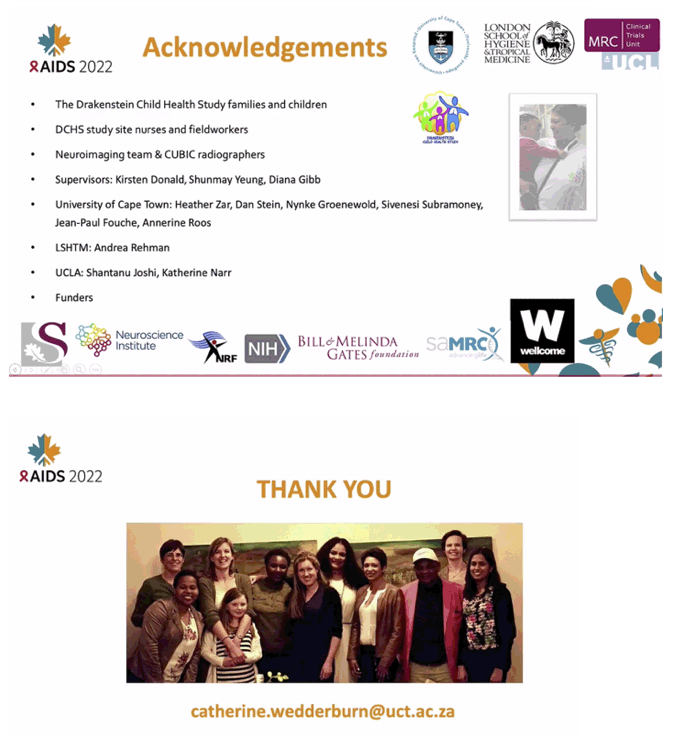
|
| |
|
 |
 |
|
|